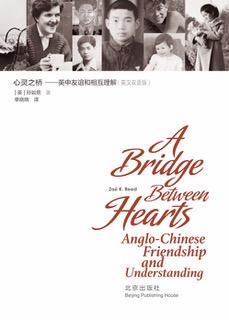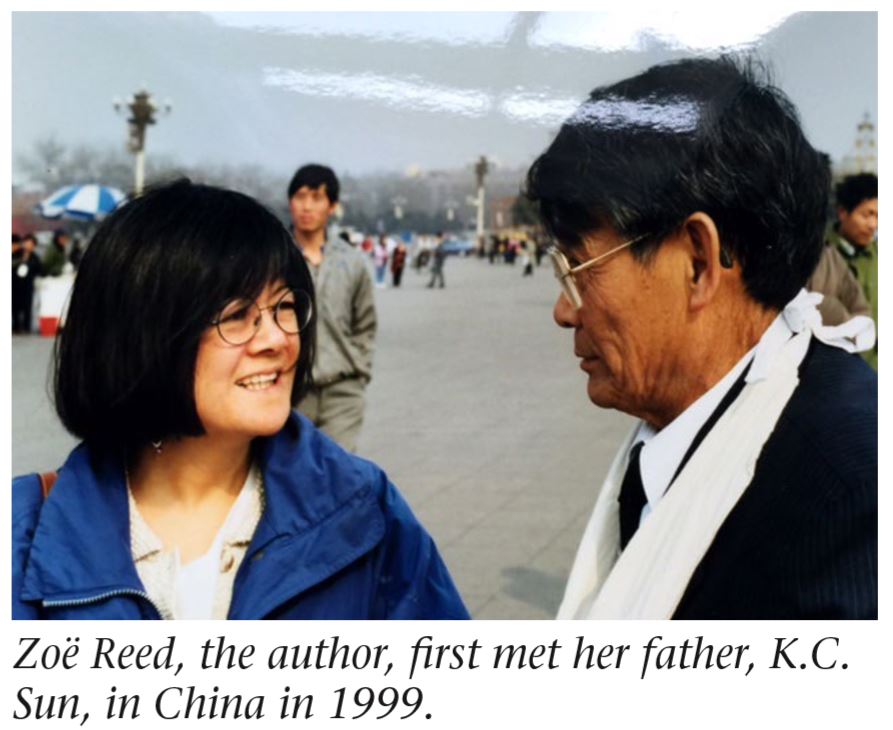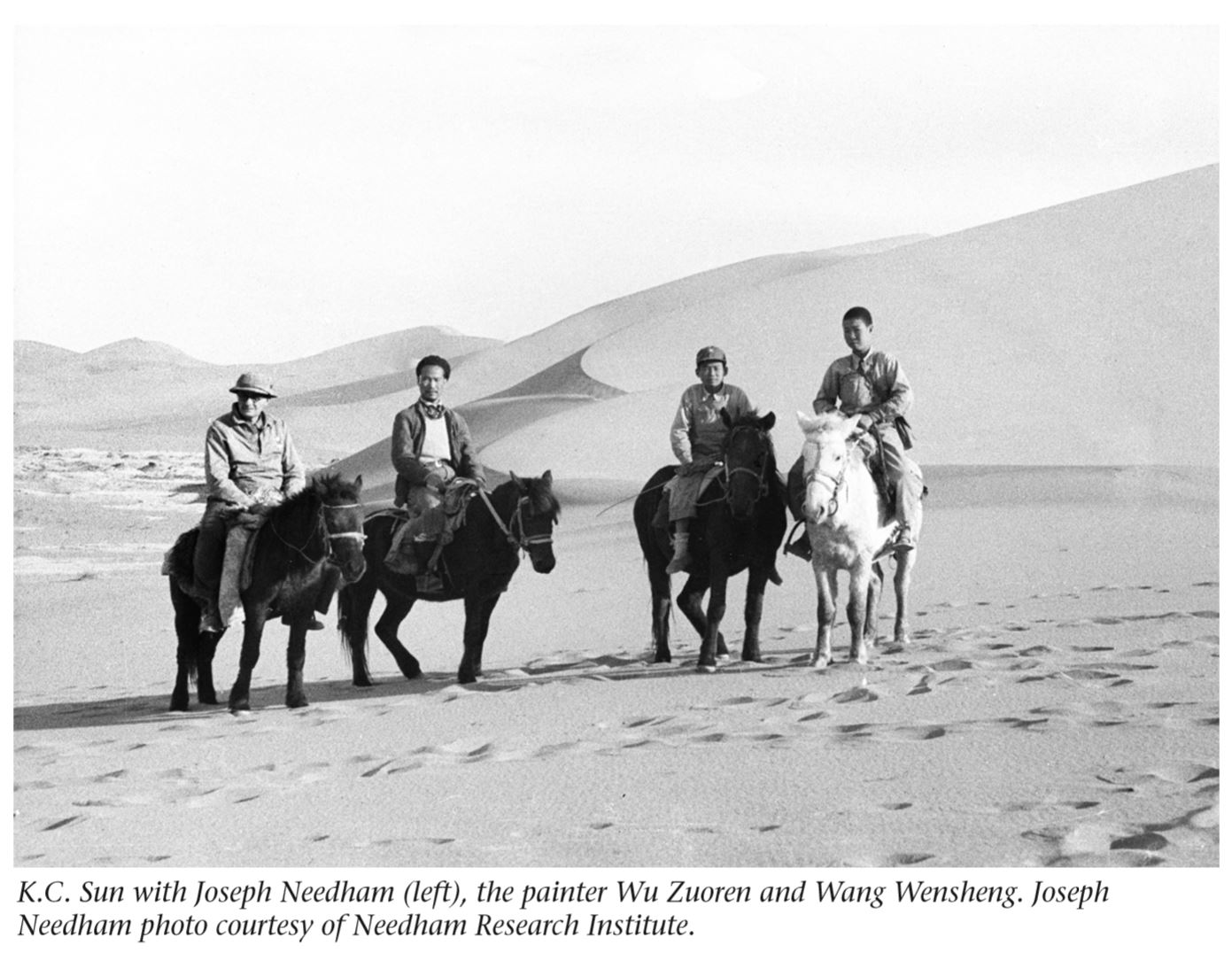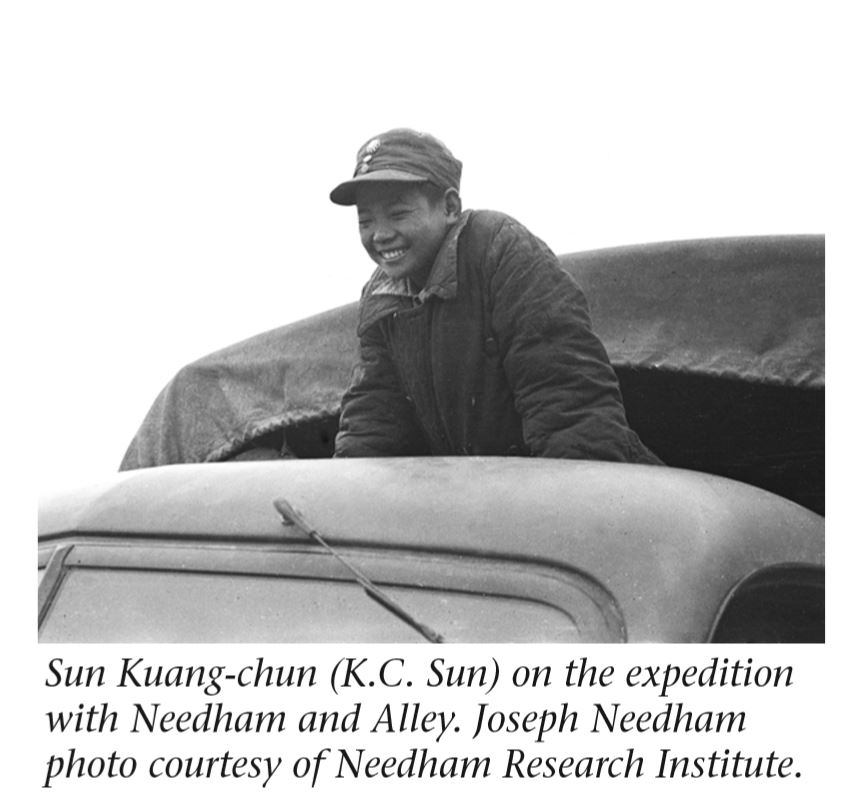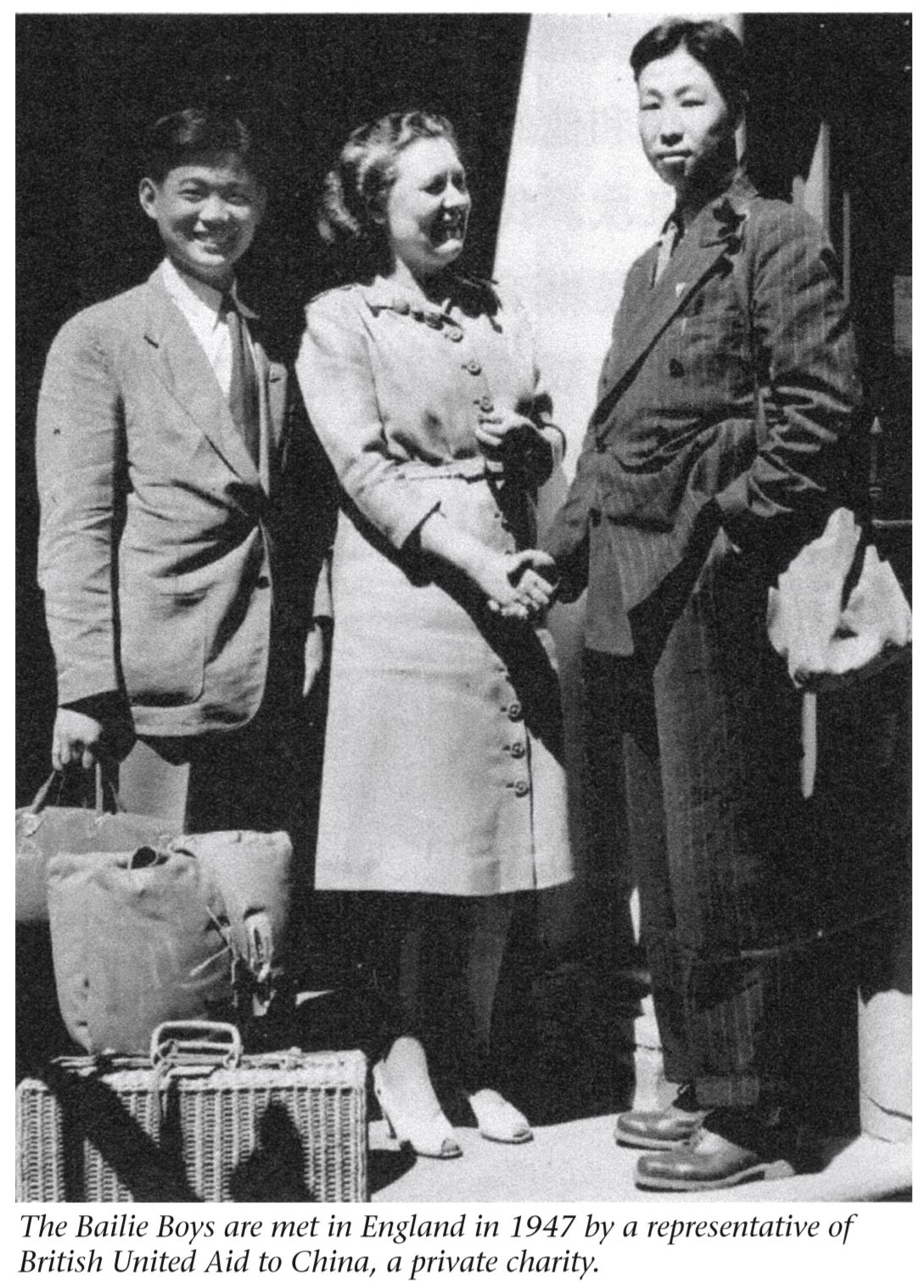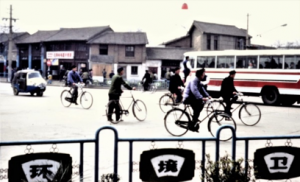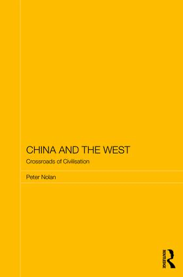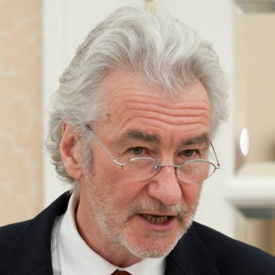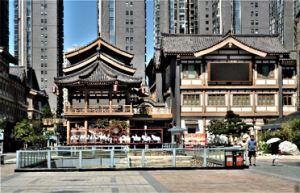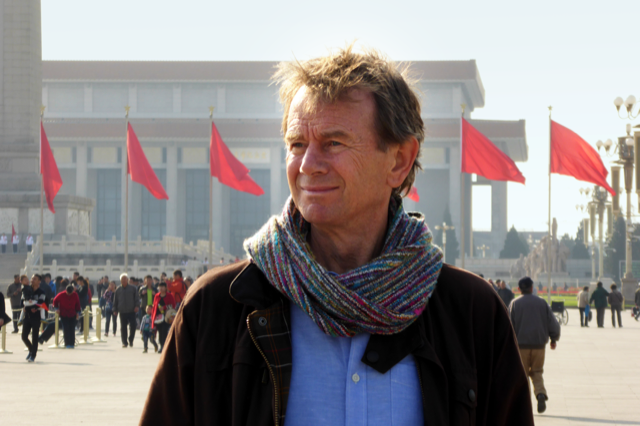Walter Fung gives a survey of the Chinese communities in the UK. The article first appeared in SACU's China Eye magazine in 2008.
Walter Fung was born in Liverpool of Chinese parents and grew up in his father's laundry. He is now retired after working for 35 years in the textile industry and is a member of SACU council as magazine editor.
This subject is more complex than its simple title would suggest. The Chinese community comprises a variety of people from different places who came to the UK at different times, for different reasons, from different backgrounds and with different standards of education. It is far from being a homogeneous group. They may have originated from the Chinese mainland, Hong Kong, Taiwan, Singapore, Viet Nam, Malaysia, or even the West Indies and a growing number will have been born here. Each will have their own story to tell of their background, their life experiences in the UK, how they have been received by the host community and how they interact with that community. Like all communities, the UK Chinese community is in a state of constant flux with new people arriving almost daily, older people getting older and younger people growing up, marrying and new generations being born.
Census returns for England and Wales show the following figures; 387 persons in 1901, 1,319 in 1911, 2,419 in 1921, 1,934 in 1931, 19,396 in 1951, 38,750 in 1961, 96,030 in 1971, 154,363 in 1981, 159,936 in 1991 and 247,403 in 2001. The Chinese population in 2008 is thought to be as high as 500,000 with the main centres being London (about 33%), the South East (about 14%) and the North West (about 11%).
Early Arrivals
The first Chinese settlers were mainly Cantonese from south China although there were some from Shanghai. Many were seamen who had sailed out of Chinese ports such as Hong Kong and Shanghai on British ships and stayed whilst others came as passengers. The ships belonging to Alfred Holt and Company based at Liverpool, better known as the Blue Funnel Line, had a technical advantage over their competitors until the opening of the Suez Canal. They settled in seaports, notably Liverpool, London and Cardiff in the early 1900s. Indeed Liverpool claims to have the oldest Chinatown in Europe.
Nearly all were young men who came on their own. If they were already married, they left their wives and children in China although a few did bring children, nearly all of them boys. Many did not come to the UK with the intention of permanently settling here. Similar to earlier migrants to San Francisco, known as the 'Gold Mountain' (gum san) they came as family representatives to make money to send home to China. The dream was to eventually return home rich to their home town, to their ancestral village, to 'hieng ha'. Maybe some of those who stayed did not want to go home until they had made their fortune. The belief was that that it was easy to make money overseas and even in 2008, this view is still widely held in certain parts of China.
Chinese are of course found in many different parts of the world. After the abolition of the slave trade in the early 1800s, there was a shortage of cheap labour worldwide and Chinese helped to fill this gap. For example, they worked on the railways in the USA, as contract labourers in Peru and in the sugar plantations in the West Indies. During the middle of the 19th Century in China, the Qing Dynasty was in decline and in many areas, law and order had broken down.
There was banditry, civil disorder, local feuds and famine to contend with as well as other problems brought on by severe demands on the land because of overpopulation. This 'push-pull' situation drove young men and others abroad to make a better living. The money they sent home was in sufficient quantity that it became an important component of the Chinese economy. Even today, remittances to China from Chinese people throughout the world amounts to 1% of the GDP of China (2006 figures).
The early migrants opened laundries notably in Liverpool, London and Cardiff, but also in other cities such as in Manchester, Newcastle upon Tyne, Sheffield and York. Restaurants and take away food shops did not begin to become widespread until the late 1950s. There were 27 Chinese laundries in England and Wales in 1901, 351 by 1911 and 547 by 1921. Many of the arrivals in the early 1900s were from the 'four counties' (See Yep) area of southern Guangdong province, especially the county of Toisan. Evidence for this can be seen in the old part of the Chinese section of Anfield cemetery in Liverpool - but you must be able to read Chinese.
The four counties are Toisan, Sunwei, Yanping and Hoiping in Cantonese dialect. A common error is to mistake these four counties for villages. Names in 'pin yin', the official Romanisation of the Mandarin dialect, are Taishan, Xinhui, Enping and Kaiping respectively. There are 'See Yep' Associations in many cities of the world, such as Liverpool, Honolulu, San Francisco, New York and Calgary where early migrants from these four counties settled. Chinese from Guangdong province are of course Cantonese speaking, but there are many sub-dialects of Cantonese. Native Hong Kong Chinese speak a different dialect of Cantonese from those from the See Yep counties. In addition some UK Chinese speak the Hakka dialect. The Hakkas are a distinctive group of mainstream Chinese who migrated into southern areas of China, notably during the nineteenth century from other parts of China.
The early UK Chinese communities comprised few Chinese women e.g. the census for England and Wales of 1911 shows, 1,232 Chinese males, but only 87 Chinese females. The figures for 1921 are 2,157 men and 262 women. Many Chinese men married British women whilst others remained single, possibly supporting a wife and family back home in China. Some must have eventually returned to China or moved on, maybe to the USA or Canada.
However, a whole, generation of children with Chinese fathers and British mothers grew up. Some writers have described the early 'Chinatowns' as more like 'Eurasiatowns'. Some of the children grew up more 'British than Chinese' probably because they were brought up more by their British mother than their Chinese father, who worked very long hours in his laundry. In families where the father was a seaman and spent much of his time away, the mother almost certainly would have had the most influence on the children's upbringing. The children would have had an experience and outlook different from children in the host community. This is an area of British social history of which little is known and of course is perpetuated in successive generations of mixed marriages.
Some Chinese men who remained unmarried were buried in unmarked graves when they died, and sadly, will remain forgotten. There are however, two monuments dedicated to all Chinese that have died in Great Britain in Liverpool's Chinese sections of Anfield and Everton cemeteries. Twice a year, at Qing Ming ('Tomb sweeping' in April) and Chong Yang (September/October), Chinese community associations, such as the See Yep Association and the Chinese Freemasons, place fresh flowers on all graves and hold short remembrance ceremonies.
Chinese Seamen in World War 2
During the Second World War, as many as 20,000 thousand Chinese seamen were stationed in Liverpool. Many were from Shanghai, others were Cantonese. They served in the British merchant navy and many lost their lives during the conflict. Their rates of pay were a third of that paid to British seamen. At the end of the war, as many as 1,362 were forcibly repatriated. Records show that about 300 of these men had married British women and supported families. They were thus qualified to stay in Britain and their repatriation was in fact illegal. Many were effectively forced out by not being informed that they were qualified to stay, not allowed jobs on shore and given only a one-way tour of duty back to China.
Some were sent back without the knowledge of their wives, who believed they had been deserted. Possible up to 1,000 children were left fatherless but the actual number is unknown. Some of the women left behind remarried to give their children security, others, gave up their children for adoption. Only recently did this episode become widely known and acknowledged publicly by the authorities. A plaque was placed to the memory of these Chinese seamen at Liverpool Pier Head on 23 January 2006. But some of their children who were adopted, and their descendants, may not even be aware of their Chinese roots.
The 'Second Wave'
The overall population of permanent Chinese residents in the UK did not change substantially until after the Second World War. It is believed that the Liverpool Chinese community until the late 1940s largely consisted of about 70 families who all knew each other - or knew of each other. The UK Chinese community continued to operate laundries until the early 1950s and then the world began to change. The advent of synthetic fibres, launderettes and home washing machines effectively killed off the laundries and many families opened restaurants and take away food shops.
The popularity and rapid growth of Chinese restaurants led to staff vacancies that were filled by Hong Kong Chinese many of whom came specifically for this purpose. This coincided with problems in farming, especially in the New Territories of Hong Kong and also the uncertain political situation in Asia. Many Chinese wanted to leave Hong Kong for better security. The Hong Kong Chinese began to come in large numbers during the early 1960s. There was some initial minor friction between them, the new arrivals, and the longer established existing Chinese community who were mainly from the 'four counties' area. In fact some of the Hong Kong Chinese were not originally natives of Hong Kong. They had entered the crown colony from the mainland after the 1949 Chinese revolution.
Many of the restaurant workers, once they had learnt the trade, moved to a different part of the country to open up their own business. Each take away food shop requires its own individual catchment area. There now may well be 10,000 Chinese take-away food shops in the UK in virtually every town or sizable village. This shows the Chinese preference for private enterprise and it also provides the opportunity for a family working together to run a small business. The children help in the work, in a similar way to their laundry predecessors. The shop premises also provide living accommodation. If necessary, the family setting up the new business would be helped financially by the extended family or by friends from perhaps the same ancestral village. The Chinese community thus differs form other ethnic groups in that they are widely scattered around the country. The families come together usually on Sunday afternoons to 'drink tea' (yum char), gossip and shop in the Chinatowns of the big cities. Surveys show that by 1985, 90% of the UK Chinese community was engaged in the catering industry.
Until the late 1960s, there were only two Chinatowns in the UK, in London and in Liverpool. Manchester's Chinatown, now probably the second largest after London, began to grow in the early 1970s and by 1987 was large enough to erect a Chinese arch, which at the time was proclaimed the largest outside of Asia. Liverpool erected a significantly larger Chinese arch in 2000-much to the annoyance of Manchester! The rivalry between these cities is not confined to football! There are now sizeable Chinatowns in Birmingham and Newcastle on Tyne.
The 'Third Wave'
From 1980 onward, following the end of the Cultural Revolution and the opening up of China by Deng Xiaoping, professional people, students, university lecturers and doctors have come to the UK from the Chinese mainland. Chinese from different origins do not socialise together as much as might be expected. Hong Kong Chinese are Cantonese speakers, whilst mainlanders speak Mandarin and this does not help. Some mainlanders say that Hong Kong Chinese are unfriendly towards them and vice versa.
The Vietnamese community also began to arrive at about this time. Many fled or were expelled from Vietnam between 1976 and 1989, some as the 'boat people.' They are mainly (60-70%) ethnic Chinese and many can speak Chinese.
Some of the newest arrivals from China in the 21st century are from Fujian province and their native dialect is Hokkien which is very different from Cantonese, but being from the Chinese mainland, they can also speak Mandarin. A number of Chinese originating from Fujian province and speaking Hokkien arrived in the UK from Malaysia and Singapore in the 'Second Wave'.
The composition of the UK Chinese Community of 2008 is therefore very different from that of say, 1980. Until about 1990, the Mandarin dialect of Chinese was hardly heard in the UK. Most people thought that Cantonese Chinese was Chinese. In 2008, Mandarin is heard as much as Cantonese in the streets of say, London or Manchester even though most of the catering businesses are still run by the Cantonese.
The number of Chinese students grew quite substantially during the early part of the 21st Century from about 20,000 in 2001 to maybe 70,000 by 2006. There seems to have been a reduction in the intake within the last two years or so, which has been attributed to the higher fees of British universities and also because of the expansion of universities in China. Chinese students value their education in British universities and also their time spent in the UK. However, a certain number have complained of racial harassment and high visa extension fees. In addition to university students there are large numbers of Chinese children at British public schools. Some public schools are only economically viable because of the Chinese children.
Social Issues
During the 1980s the British Government became concerned that the Chinese and other ethnic groups were not represented in the public services, the armed forces or the police in proportion to their size in the community. The Chinese had been recognised as the third largest visible ethnic group who were contributing to the wealth of Britain by working hard and paying taxes. The government was also concerned that many Chinese were not making use of the social services and health programmes to which they were entitled.
Their views were not being heard and their needs not being addressed, especially the needs of Chinese women, many of whom felt isolated especially if they could not speak English. They had to contend with these problems in addition to the dislocation, culture shock and nostalgia of their former homes half way across the world. This led to the setting up of self-help womens' associations such as Wai Yin in Manchester in 1988 by community minded Chinese women. They felt that Chinese women were being discriminated against both by British society and even by their own community and families. They sought to support and assist Chinese women and their families in need and to help Chinese women build up a positive self-image and also help them gain access to information and community resources, especially medical issues.
There are now many other Chinese community associations particularly in the large cities including Liverpool, Manchester, Leeds, Leicester, Nottingham and several London boroughs. These associations provide facilities for Chinese children to learn traditional Chinese arts such as paper cutting and kite and lantern making. Other activities include care of the elderly as well as social and leisure needs. These associations also promote cultural exchanges and organise Chinese language classes for British born Chinese children and English classes for new arrivals. Low cost housing and accommodation for families on low incomes and the elderly are provided by Chinese housing associations such as Tung Sing in Manchester. In the larger cities there are Chinese business associations to help small businessmen and to promote contacts with Chinese companies. However it has been commented that at present none of the many British Chinese businesses, unlike some Indian businesses, has yet made the transition into the big league or become a Plc.
Many Chinese by their 'Chineseness' and Confucian background are uncomplaining and generally avoid publicity and any form of contact with officialdom. They prefer to keep their heads down and get on with their business. The Cantonese in particular are renowned for their aptitude for business. In fact the Cantonese greeting at Chinese New Year, 'gung he fat choy' translates as 'greetings-may you make plenty of money'.
The Chinese are seen as clinging to their cultural heritage and not wishing to assimilate into mainstream British society. A 2006 survey, estimated that about 30% of British Chinese were not on the electoral register, compared to 6% for whites and 17% for all ethnic minorities. The Chinese have been nicknamed, 'the silent minority', but this seems to be slowly changing to a certain extent as will become clear later in this section. The Chinese are regarded as being law abiding and hard working and this is in line with their Confucian culture and nature. It has been said (Runnymead Research Report, 1986) that, 'The Chinese are not especially interested in influencing other people neither do they readily accept non-Chinese influences on themselves. They have a sense of identity which is absolutely confident but is in no way aggressive.'
However being stereotyped as 'inscrutable' and being identified with comic and sometimes derogatory figures such as Fu Manchu, Charlie Chan, the 'yellow peril', and Triad gangsters is irritating to Chinese people. To be fair, most British educated people know of the richness of Chinese culture spanning 5,000 or more years and it is not just confined to Chinese cooking, Kung Fu and Feng Shui. Acupuncture, once ridiculed, is now an accepted form of alternative medicine. There is growing recognition of the effectiveness of Chinese herbal medicine, and other forms of traditional Chinese medicine. There are now Chinese herbal shops in high streets and shopping malls.
Within the last decade, Chinese people do seem to be making themselves heard more and do seem to be making more of an effort to play a part in the community. This has in part been encouraged by government. The first Chinese Peer, Lord Michael Chan of Oxton was appointed in 2001 and in the same year, a Chinese Civil Rights Action group (The Monitoring Group Min Quan) was established. This group has successfully defended people of Chinese descent in both civil and criminal matters. When a national newspaper associated the 2001 outbreak of foot and mouth disease with a Chinese restaurant, about 1,000 Chinese demonstrated in London and successfully demanded a retraction of the accusations. In 2002 British Chinese complained to the British Library about the content of an exhibition about the East India Company. They demanded a mention of the human cost in China of the opium trade. In May 2007, Anna Lo became the first elected Chinese person in the Northern Ireland Assembly.
Mixed marriages between Chinese and others in the UK do occur but Chinese parents, whilst preferring their children to marry fellow Chinese, are generally tolerant. A Chinese father whilst expressing satisfaction in three of his four children having married Chinese partners, said of the fourth, 'She is likely to marry an Englishman, but I would not stop her-even if I could- and in any case, we will have no control over the next generation'. The Census of 1991 revealed that in the UK, 26% of Chinese women were married to non-Chinese partners, compared to 13% of Chinese men who had non-Chinese partners.
Cultural Issues
There is a growing awareness of Chinese literature, which is being added to by Chinese modern authors. Some are British born, others are Chinese who have based themselves in the UK. In a similar way to everything else concerning China or Chinese people, the situation is continuously changing. Many of the books of the 1990s seemed to be concerned with life in China during the difficult times, especially the era of the Cultural Revolution and the status of women in old, pre-1949 revolution, China. One Chinese critic commented that, the 'sad story of China' seems to attract all the attention. The richness of classical Chinese literature written over perhaps 2,000 years is still largely unknown to the general Western public. How many have read or even heard of the 'Dream of the Red Chamber' or 'The Romance of the Three Kingdoms?'
An interest in both traditional and contemporary Chinese art has developed in the UK especially over the last two decades or so. The "Chinese Arts Centre" ➚ in Manchester has been active in promoting and encouraging Chinese artists, both local born and also those from abroad. There are quite a few Chinese brush painting groups in certain parts of the UK. Chinese art exhibitions are held regularly and Chinese artists are brought from China. British schools hold 'China Days' so young British children can learn about Chinese culture.
Many UK cities, towns and even counties have 'twinning' arrangements with Chinese cities and provinces. For example Liverpool is twinned with Shanghai, Manchester with Wuhan and Yorkshire with Zhejiang province. British diners are aware of the difference between Cantonese, Sichuan and Beijing cooking. There is an interest in Chinese festivals such as Dragon Boat racing, the Mid Autumn Festival and especially Chinese New Year which is now celebrated regularly in many cities in the UK.
Chinese religion is a mixture of Confucianism, Chinese Buddhism, Taoism and traditional beliefs such as ancestor worship. Hong Kong Chinese are more religious than young mainlanders, many of whom say that they have no religion. Of course many Chinese, both Hong Kong and former mainlanders are Christians. Virtually all Chinese families in the UK with children celebrate Christmas. Many Chinese couples in the UK prefer to have a western style wedding, but with Chinese characteristics such as a Chinese banquet and sometimes a Chinese Tea ceremony. Funerals may be a mixture of a Christian service combined with traditional Chinese or Chinese Buddhist rituals. Many Chinese honour ancestors and visit the cemetery, traditionally at Qing Ming, Chong Yang and on the deceased person's birthday or anniversary of their death.
British Born Chinese (BBCs)
The Chinese community is changing as an increasing number of persons of Chinese descent are born in the UK and grow up as the British Born Chinese - the so called BBCs. Many of the children of restaurant and take away food shop operators are not following their parents into this trade which requires long and anti-social working hours. Many go to university and enter industry and the professions as engineers, teachers, accountants and doctors.
Although BBCs grow up with British children, have a British education and eventually go to work in British companies, schools and hospitals they are neither Chinese nor British. Consequently many will have problems of identity and at times, divided loyalties. The generation gap between parents brought up in a Chinese environment and their children growing up in Britain is likely to be even wider and complex than the gap between British parents and their children. Many will have experienced racial abuse and discrimination to different degrees, which is likely to have affected their attitude to life and possibly their career promotion prospects. They may feel confused not knowing where they fit in, as they are neither fully Chinese, nor fully British.
Some feel uncomfortable because they cannot speak Chinese fluently or read Chinese characters. Indeed the language barrier will intensify the generation gap, the parents never fully mastering English and the children never fully mastering Chinese. Some parents will not know precisely what their children are thinking and vice versa. On the other hand, BBC children sometimes act as interpreters for their parents. This can lead to awkward situations if a son has to speak to a doctor on behalf of his mother. Language is the root cause of many social problems.
BBCs have come to accept that they are precisely what the term applied to them implies. They are neither Chinese nor British but are have a separate identity of their own, a British Born Chinese person. A distinctive BBC 'culture' in visual art, literature and even the theatre has emerged. There are BBC websites such as "Dimsum" ➚. This culture is also in a continuous state of evolution as the nature of the BBC society changes and their experience of life and outlook change. It will continue to change as sons and daughters become fathers and mothers of a fresh new generation of BBCs.
Expressing individuality is not encouraged by older Chinese parents with traditional attitudes. But individuality has become an important part of a young person's life in the West and BBCs are no exception. Here they are likely to clash with their more conservative parents but some BBCs will be influenced by peer pressure of the host community. However, traditional Chinese values, respect for authority, elders, parents and teachers do seem to persist in many young BBCs. The crime rate amongst Chinese in the UK is generally low and very few young Chinese drink to excess and engage in antisocial behaviour. Education is valued and Chinese children and students study hard. Statistics show that they generally obtain the highest academic qualifications when compared to the host community and other ethnic groups. Even so, some Chinese parents complain that their offspring do not show Chinese attitudes. They are 'bananas', yellow on the outside, but white on the inside. Some Chinese parents send their children to 'Chinese Sunday School' to learn the Chinese language. Both Cantonese and Mandarin classes are available.
The increasing number of Chinese professionals is helping to erode the 1985 figure of 90% employed in the catering industry as we move further into the 21st Century. In 2004, only about 45% of the Chinese population was employed in catering. Furthermore, a survey showed that in 1991, 34% of the Chinese in Britain were self-employed but this figure had dropped to 27% during the period 2003 to 2006.
Chinese school leavers have the highest academic qualifications. However, some figures relating to employment was interpreted by one BBC as showing that Chinese are amongst the least likely to be successful in job application. Possibly this was because of her own personal experience. Maybe there were insufficient numbers for the survey to be meaningful - or, there way be some truth in it. If this is the case, it could be influenced by the Chinese nature of not projecting themselves forward and selling themselves - it is more in the Chinese nature to be unassuming and modest. This attribute of the Chinese is likely to affect their salary and career progression in Britain.
However actual racism does exist and may be influencing their promotion aspects and their general work quality.
Chinese restaurant and takeaway workers are subject to customers not paying their bills, verbal racist abuse and even violent assault. In 2005 a take away food shop owner was killed by a group of youths in Greater Manchester.
Most Chinese tolerate and ignore antisocial behaviour. Some complain that the police could be more helpful. In addition, there have been several recent incidents of desecration of Chinese graves in the Chinese section of cemeteries in Liverpool.
British Chinese are proud to be British but are also proud of China's economic success and enhanced stature amongst the countries of the world. The British host community is generally respectful of the Chinese Community which they see as contributing to the UK in a positive way. However, the British media and press frequently present biased reports of world events in which China is involved. Many British Chinese quietly resent such reports, which seem to be perpetuating a cold war attitude.
Unlike previous generations, many of the present Chinese are here to stay in Britain permanently and are happy to regard themselves as ethnic Chinese- but British citizens in the British multicultural and multiracial society. But there is a need for greater understanding between the Chinese Community and the host society - and also between the two countries, the UK and China.
Further Reading
1) Parker David, Through different eyes: The cultural identities of Young Chinese people in Britain, Aldershot: Avebury 1995.
2) Jones Douglas, The roots of the Chinese in Britain, China Now No 110, Autumn 1984, SACU.
3) Foley Yvonne, Chinese seamen in World War 2, China Eye No 13, Spring 2007, SACU.
4) Pann Lynn (Ed) Encyclopaedia of the Chinese overseas, Curzon 1998.
5) Wikipedia. British Chinese.
